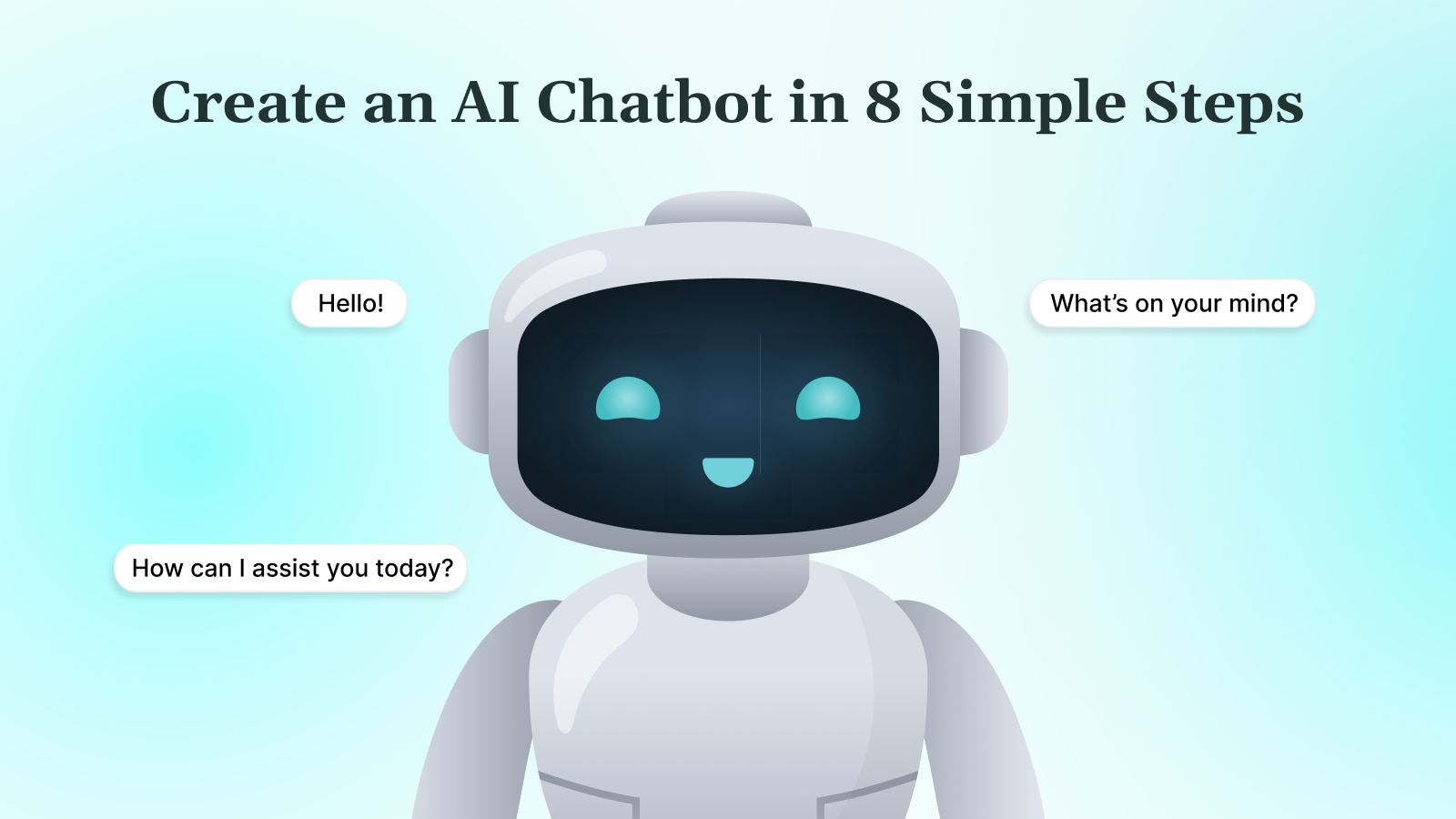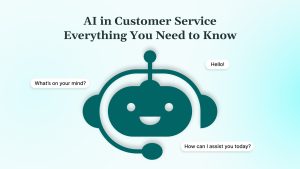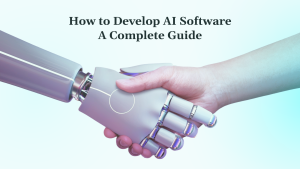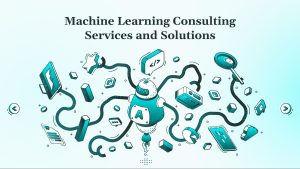Building an AI chatbot can transform how you engage with customers, streamline operations, or enhance user experiences. These intelligent tools are increasingly vital across industries, and as a beginner or business owner, learning to create one opens new possibilities. This guide walks you through the process, providing clear, actionable steps to develop a chatbot that meets your needs.
You will discover what AI chatbots are, their key benefits, and a detailed roadmap to build one, from choosing the right platform to optimizing performance. With practical insights, you will be ready to create a chatbot that delivers value and improves efficiency.
Key Takeaways
- AI chatbots use NLP to provide dynamic, conversational solutions, unlike rule-based bots.
- Define your chatbot’s purpose and choose between no-code platforms or custom frameworks.
- Design intuitive conversation flows and train your bot with diverse user inputs.
- Test thoroughly, deploy across channels, and monitor KPIs to ensure performance.
- Use best practices like clear intents and secure APIs to build reliable chatbots.
What Is an AI Chatbot?
An AI chatbot is a software tool that uses artificial intelligence, particularly natural language processing (NLP), to interact with users through text or voice. Unlike traditional software, it understands and responds to human language, enabling dynamic conversations. AI chatbots differ from rule-based bots, which follow predefined scripts by learning from data to handle varied inputs. Examples like ChatGPT (for general conversation), Alexa (for voice assistance), and Facebook Messenger bots (for customer support) show their versatility.
The purpose of an AI chatbot is to automate tasks, answer queries, or guide users, saving time and resources. Whether you are helping customers or scheduling meetings, these tools enhance efficiency and engagement.
Now that you understand AI chatbots, let us explore their practical applications across industries.
Use Cases for AI Chatbots
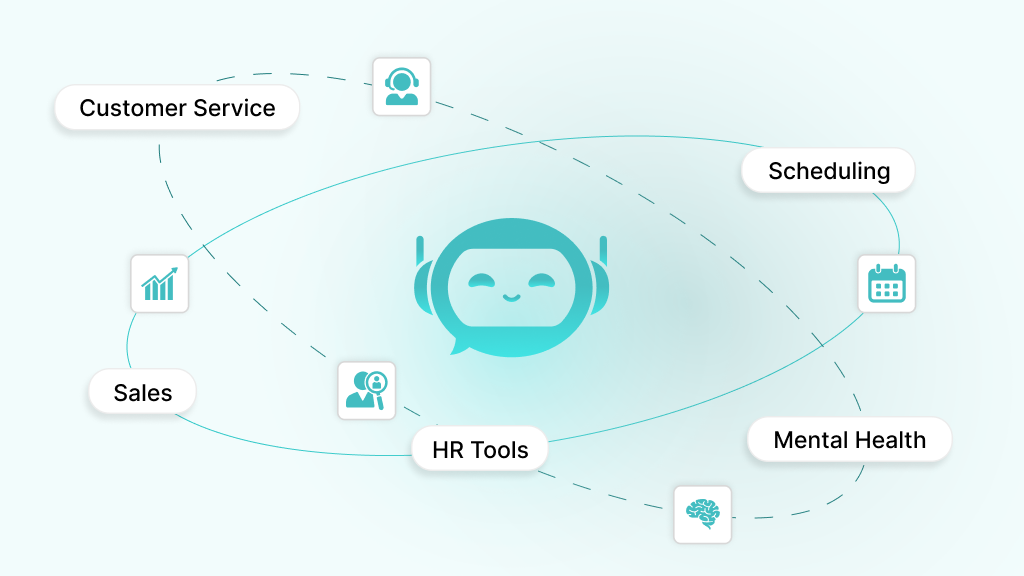
AI chatbots are transforming how businesses and organizations operate by automating repetitive tasks and improving user interactions. Their versatility makes them valuable in diverse sectors, from customer service to healthcare. Understanding these use cases helps you identify how a chatbot can address your specific needs.
- Customer Service and Support: Handle FAQs, resolve issues, or guide users through troubleshooting, available 24/7 to improve satisfaction.
- Lead Generation and Sales: Qualify leads, recommend products, or process orders, boosting conversions in e-commerce or B2B settings.
- HR and Internal Tools: Streamline employee onboarding, answer HR queries, or manage leave requests, enhancing workplace efficiency.
- Personal Productivity and Scheduling: Book meetings, send reminders, or organize tasks, helping users stay productive.
- Healthcare Triage or Mental Health: Assess symptoms, provide self-care tips, or offer mental health support, improving access to care.
These use cases highlight the broad potential of chatbots, guiding your project’s focus.
Before diving into development, let us cover the prerequisites you will need to get started.
Prerequisites Before You Start
Building an AI chatbot requires preparation to ensure success. You need to clarify your goals, gain foundational knowledge, and gather the right tools. This groundwork helps you avoid common pitfalls and build a chatbot that aligns with your objectives.
- Define Your Purpose and Users: Decide what your chatbot will do (e.g., answer customer queries) and who it serves (e.g., shoppers or employees).
- Understand NLP Basics: Learn core NLP concepts like intents (user goals) and entities (specific details) to enable natural conversations.
- Required Tools and Skills: Familiarize yourself with programming (Python or JavaScript), APIs, and platforms like Dialogflow or Rasa. Basic coding knowledge is essential for custom builds.
With these prerequisites in place, you are ready to begin the development process.
Let us start with the first step: choosing the type of chatbot you will build.

Step 1: Choose Your Chatbot Type
Deciding whether to build a rule-based or AI-powered chatbot is a critical first step. Each type has distinct capabilities and requirements, impacting how your chatbot interacts with users. Understanding their differences helps you select the best option for your project.
Rule-Based vs. AI Chatbots
Rule-based chatbots follow predefined decision trees, responding to specific keywords or phrases with scripted answers. They are simple to build but limited in handling complex or varied inputs. AI-powered chatbots use NLP and machine learning to understand natural language, offering dynamic responses. For customer service with predictable queries, rule-based bots may suffice; for flexible, conversational tasks, choose AI-powered bots.
- Rule-Based: Easy to set up, best for simple, structured interactions like FAQs.
- AI-Powered: More complex, ideal for dynamic conversations requiring context understanding.
- Your Choice: Pick rule-based for quick, limited tasks; AI for scalable, natural interactions.
Now that you have chosen your chatbot type, let us select the platform or framework to build it.
Step 2: Pick a Platform or Framework
The platform or framework you choose shapes your chatbot’s development process, from ease of use to customization. Beginners can opt for no-code platforms, while custom frameworks offer more control. Your decision depends on your skills, timeline, and project complexity.
No-Code/Low-Code Platforms
No-code platforms like Dialogflow, Botpress, Tidio, or ManyChat let you build chatbots with drag-and-drop interfaces. They are beginner-friendly, requiring minimal coding, and support quick deployment for tasks like customer support. These platforms integrate with channels like WhatsApp or websites, making them ideal for fast setups.
- Examples: Dialogflow (Google), Tidio (e-commerce focus), and ManyChat (marketing).
- Why Use Them: Quick to learn, fast to deploy, minimal coding required.
Custom Development Frameworks
Custom frameworks like Rasa (Python-based), Microsoft Bot Framework, or OpenAI API offer flexibility for tailored chatbots. They require coding skills but allow deep customization, such as integrating with your CRM or building advanced NLP models. These are suited for complex projects needing specific functionality.
- Examples: Rasa (open-source NLP), OpenAI API (GPT-based), Microsoft Bot Framework.
- Why Use Them: Full control, scalable integrations, and advanced features.
With your platform chosen, let us move on to designing how your chatbot will interact with users.
Step 3: Design the Conversation Flow
A well-designed conversation flow ensures your chatbot feels natural and helpful. You need to map out how users will interact with it, anticipating their questions and responses. This step is crucial for creating engaging, user-friendly conversations that meet your goals.
Start by identifying user intents, like “book a meeting” or “check order status.” Create conversation trees for rule-based bots or train AI models to predict responses. Include fallback messages for unrecognized inputs, like “I am not sure. Can you clarify?” Context management, tracking previous interactions, enhances user experience. Design tips include using short, clear responses, maintaining a friendly tone, and offering options to guide users.
- Intents and Responses: Map common user goals and craft relevant replies.
- Fallbacks: Handle unexpected inputs gracefully to avoid frustrating users.
- Design Tips: Keep responses concise, use natural language, and test flows with real users.
With your conversation flow designed, let us focus on training your chatbot to understand users.
Step 4: Train the Chatbot Using NLP
Training your chatbot with NLP enables it to understand and respond to natural language. This step involves defining intents and entities, then training a model to recognize user inputs. Proper training ensures your chatbot handles varied queries accurately.
Understanding Intents and Entities
Intents are the user’s goals, like “find a product.” Entities are specific details, like “red shoes” in a query. Using tools like Dialogflow or Rasa, you define intents (e.g., “purchase_item”) and entities (e.g., “color=red, item=shoes”) to structure how your bot interprets inputs.
- Defining Intents: List user goals, like ordering or asking FAQs.
- Defining Entities: Identify key details, like dates or product names.
- Tools: Dialogflow simplifies setup; Rasa offers custom NLP control.
Training Your NLP Model
Input sample phrases, like “I want to buy shoes” or “Show me red sneakers,” to train your model. Include variations to cover different ways users might phrase requests. Test the model with real inputs, refining it to improve accuracy. For example, if users say “purchase” or “buy,” ensure the model recognizes both as the same intent.
- Sample Inputs: Use diverse phrases to train robust understanding.
- Testing and Refining: Test with edge cases and update training data regularly.
With your chatbot trained, let us integrate it with external systems to enhance functionality.
Step 5: Integrate APIs and Backend Systems
Integrating APIs connects your chatbot to external data sources, making it more powerful. You can fetch real-time data from CRMs, e-commerce platforms, or databases to provide dynamic responses, like weather updates or order tracking. Secure APIs are key to reliable functionality.
Use RESTful APIs to pull data, such as connecting to a Shopify store for order status or a calendar API for scheduling. Ensure secure connections with authentication tokens and HTTPS. Test integrations thoroughly to verify data accuracy and response times, ensuring a seamless user experience.
- API Examples: Weather APIs, CRM systems, or booking tools.
- Security: Use secure endpoints and validate data to prevent errors.
Now that your chatbot is integrated, let us test it to ensure it works as intended.
Step 6: Test and Iterate
Testing is essential to confirm your chatbot handles all scenarios effectively. You need to verify conversation paths, manage edge cases, and refine based on user feedback. This iterative process ensures your chatbot is reliable and user-friendly.
Run functional tests to check all conversation flows, like bookings or FAQs. Test edge cases, such as vague or incorrect inputs, to ensure robust fallbacks. Collect feedback from beta users to identify issues, then update intents and responses to improve accuracy and engagement.
- Testing Types: Functional, edge case, and user acceptance testing.
- Feedback Loop: Use user input to refine conversation logic and NLP.
With testing complete, let us move to deploying your chatbot to reach users.
Step 7: Deploy the Chatbot
Deployment makes your chatbot accessible to users across platforms like websites, mobile apps, WhatsApp, or Slack. Choosing the right channels and hosting solution ensures smooth performance and compliance with data privacy laws like GDPR or HIPAA.
Integrate your chatbot with desired channels using platform-specific APIs, such as Facebook Messenger’s webhook or Slack’s Bot API. For custom bots, host on platforms like Heroku, AWS, or Azure. Configure secure connections and ensure compliance with relevant regulations, like encrypting user data.
- Channels: Websites, messaging apps, or internal tools like Slack.
- Hosting: Choose scalable platforms and secure configurations.
After deployment, let us focus on monitoring and optimizing your chatbot’s performance.
Step 8: Monitor Performance and Optimize
Monitoring your chatbot ensures it meets user needs and performs reliably. Track key performance indicators (KPIs) like response accuracy, resolution rate, and user satisfaction to identify areas for improvement. Regular updates keep your bot effective over time.
Use tools like Google Analytics, Chatbase, or Botanalytics to monitor metrics. Analyze user interactions to spot patterns, such as frequently misunderstood queries. Update training data and conversation flows to improve accuracy and schedule periodic reviews to add new features or fix issues.
- KPIs: Accuracy, resolution rate, and user feedback scores.
- Tools: Analytics platforms to track and optimize performance.
With monitoring in place, let us review best practices to guide your chatbot development.
Best Practices for Building AI Chatbots
Following best practices ensures your chatbot is effective, user-friendly, and secure. These guidelines help you avoid common mistakes and build a bot that delivers value.
Below, we outline key practices to guide your development process, helping you create a chatbot that stands out for its quality and functionality.
- Craft Clear and Specific Intents: Define precise user intents, such as “book_appointment” or “check_status,” to ensure your chatbot understands user goals accurately. Use tools like Dialogflow or Rasa to categorize intents clearly, reducing misinterpretations. For example, separate “cancel order” from “modify order” to avoid confusion and regularly review intent performance to refine accuracy.
- Design Natural, Conversational Responses: Write responses in a friendly, concise tone that feels human, avoiding overly technical or robotic language. For instance, instead of “Query processed successfully,” say, “Got it! Your request is complete.” Include prompts or buttons to guide users and test responses with real users to ensure they feel engaging and natural.
- Prioritize Data Security and Privacy: Protect user data with HTTPS encryption and secure API authentication, such as OAuth or API keys. Comply with regulations like GDPR or HIPAA by anonymizing sensitive data and obtaining user consent for data collection.
- Test Continuously Across Scenarios: Test your chatbot regularly, covering all conversation paths, edge cases, and unexpected inputs. Use tools like Botium or manual testing to verify responses.
- Maintain and Update Regularly: Keep your chatbot’s training data fresh by adding new user phrases and refining intents based on analytics. Schedule monthly reviews to incorporate feedback and update responses, ensuring your bot stays relevant as user needs or business goals evolve.
- Optimize for Scalability: Design your chatbot to handle increasing user volumes by using scalable hosting like AWS or Azure. Implement caching for frequently accessed data, like FAQs, to reduce server load, and plan for modular updates so you can add features without overhauling the entire system.
These practices set a strong foundation for a successful chatbot.
Now, let us explore the tools and technologies that support chatbot development.
Popular Tools and Technologies

Choosing the right tools and technologies simplifies chatbot development and enhances functionality. From platforms to programming languages, these options cater to different skill levels and project needs. Here are some of the most popular tools you should consider:
- Chatbot Platforms: Dialogflow (Google) offers a user-friendly interface for NLP-powered chatbots, integrating easily with WhatsApp or websites, ideal for quick setups. Rasa, an open-source Python platform, provides customization for advanced users, perfect for tailored NLP models. Microsoft Bot Framework suits enterprise-grade bots with Azure integrations, while OpenAI’s API delivers powerful conversational AI for natural responses.
- Programming Languages: Python is beginner-friendly, with libraries like Rasa for NLP tasks. JavaScript (Node.js) excels for web-based chatbots, supporting real-time integrations. C# works well with Microsoft Bot Framework for enterprise applications, offering robust development support.
- NLP APIs: OpenAI GPT provides advanced language understanding for conversational bots, though it requires API cost management. Google Cloud NLP simplifies intent detection, while Wit.ai offers free, flexible NLP for multilingual chatbots. Amazon Lex supports voice and text for versatile applications.
- Hosting Solutions: Heroku is great for quick deployments with free tiers, ideal for small projects. AWS provides scalable options like Lambda for serverless bots. Azure offers secure, enterprise-ready hosting, and Netlify supports JAMstack bots with static front-ends and serverless functions.
- Additional Tools: Postman tests API integrations, ensuring reliable data flow. Git and GitHub manage code versioning. Chatbase tracks performance metrics, helping you refine user interactions, while VS Code streamlines coding with useful extensions.
These tools empower you to build robust chatbots efficiently. Finally, let us address common challenges and how to overcome them.
Common Challenges and How to Overcome Them
Building an AI chatbot can be complex, especially for beginners. Anticipating challenges helps you stay prepared and maintain progress. Here are some common hurdles and practical solutions:
- Grasping NLP Complexity: Natural language processing (NLP) concepts like intents, entities, and context can feel overwhelming. Start with beginner-friendly platforms like Dialogflow, which simplify NLP setup with visual interfaces. Follow online tutorials, such as those on YouTube or freeCodeCamp, to learn incrementally, and practice with small, focused intents to build confidence.
- Managing Unpredictable User Inputs: Users may ask vague or off-topic questions, like “What is up?” or misspellings, which can confuse your bot. Design robust fallback responses, such as “I am not sure what you mean. Try asking about orders.” Test with diverse inputs and use tools like Rasa’s interactive learning to refine how your bot handles ambiguity.
- Resolving Integration Issues: Connecting your chatbot to APIs, like a CRM or payment system, can lead to errors, like incorrect data or timeouts. Use Postman to test API endpoints before integration, ensuring they return expected data. Document API credentials securely and check rate limits to avoid disruptions, especially for high-traffic bots.
- Keeping Users Engaged: Long or repetitive conversations can bore users, leading to drop-offs. Keep responses short, ideally under 20 words, and use interactive elements like buttons or quick replies to simplify navigation. Analyze user sessions with tools like Chatbase to identify where users lose interest and adjust flows accordingly.
- Overcoming Resource Constraints: Building a custom chatbot requires time, skills, or budget, which may be limited. Start with no-code platforms like Tidio for quick prototypes, then transition to custom frameworks like Rasa as your skills grow. Allocate time for learning by setting weekly goals, like mastering one NLP concept at a time.
- Ensuring Scalability and Performance: A chatbot that works for 10 users may struggle with 1,000. Choose scalable hosting like AWS Lambda or Heroku, and optimize your code with caching for common queries. Monitor performance metrics like response time and plan for load balancing to handle traffic spikes without downtime.
By addressing these challenges, you can keep your project on track. Let us summarize the process and guide you toward your next steps.
Conclusion
This guide has outlined a clear, step-by-step process for building an AI chatbot, from defining its purpose to optimizing its performance. You now have the tools and knowledge to create a chatbot that meets user needs effectively.
At DEVtrust, our experienced developers specialize in crafting custom AI chatbots that enhance customer engagement and streamline business operations. We use platforms like Rasa, Dialogflow, and OpenAI to build scalable, secure solutions tailored to your specific goals, whether for customer support, sales, or internal tools.
Ready to transform your business with a powerful chatbot? Contact DEVtrust today to discuss your project, and let our team build a solution that drives efficiency, improves user experiences, and helps you achieve lasting success.
How to Build an AI Chatbot: Step-by-Step Guide
Master how to make an AI chatbot with our step-by-step guide. Define goals, select tools, and design conversation flow. Start building now!
Contact Us